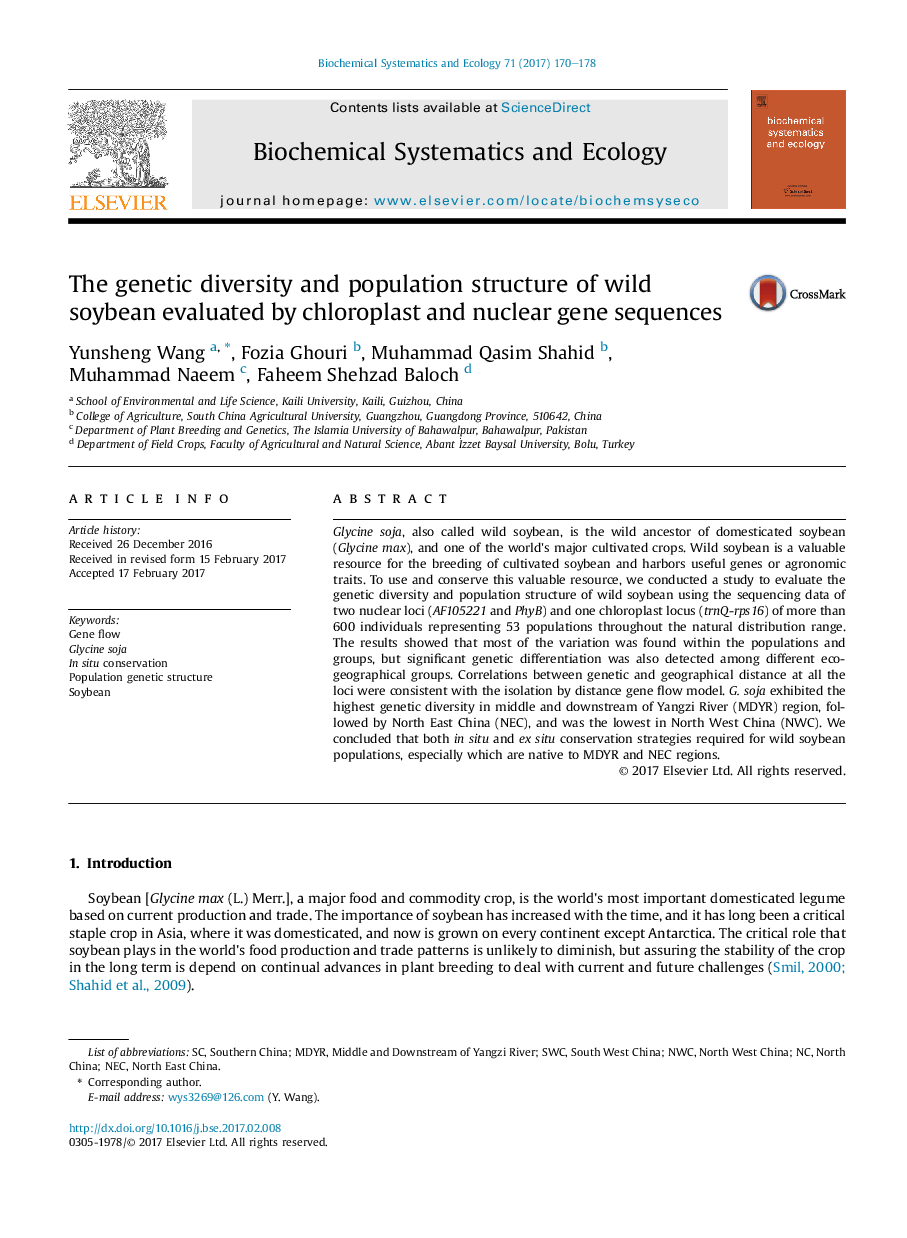| Article ID | Journal | Published Year | Pages | File Type |
|---|---|---|---|---|
| 5154943 | Biochemical Systematics and Ecology | 2017 | 9 Pages |
Abstract
Glycine soja, also called wild soybean, is the wild ancestor of domesticated soybean (Glycine max), and one of the world's major cultivated crops. Wild soybean is a valuable resource for the breeding of cultivated soybean and harbors useful genes or agronomic traits. To use and conserve this valuable resource, we conducted a study to evaluate the genetic diversity and population structure of wild soybean using the sequencing data of two nuclear loci (AF105221 and PhyB) and one chloroplast locus (trnQ-rps16) of more than 600 individuals representing 53 populations throughout the natural distribution range. The results showed that most of the variation was found within the populations and groups, but significant genetic differentiation was also detected among different eco-geographical groups. Correlations between genetic and geographical distance at all the loci were consistent with the isolation by distance gene flow model. G. soja exhibited the highest genetic diversity in middle and downstream of Yangzi River (MDYR) region, followed by North East China (NEC), and was the lowest in North West China (NWC). We concluded that both in situ and ex situ conservation strategies required for wild soybean populations, especially which are native to MDYR and NEC regions.
Keywords
Related Topics
Physical Sciences and Engineering
Chemistry
Organic Chemistry
Authors
Yunsheng Wang, Fozia Ghouri, Muhammad Qasim Shahid, Muhammad Naeem, Faheem Shehzad Baloch,
